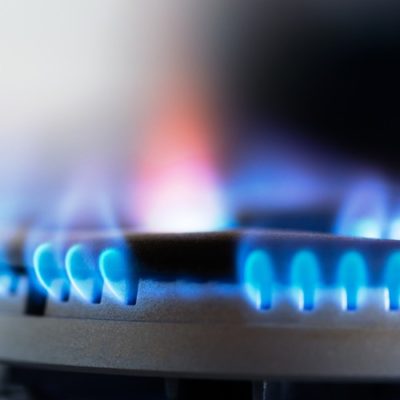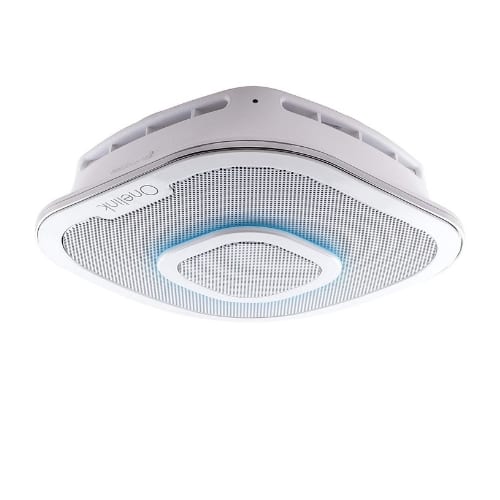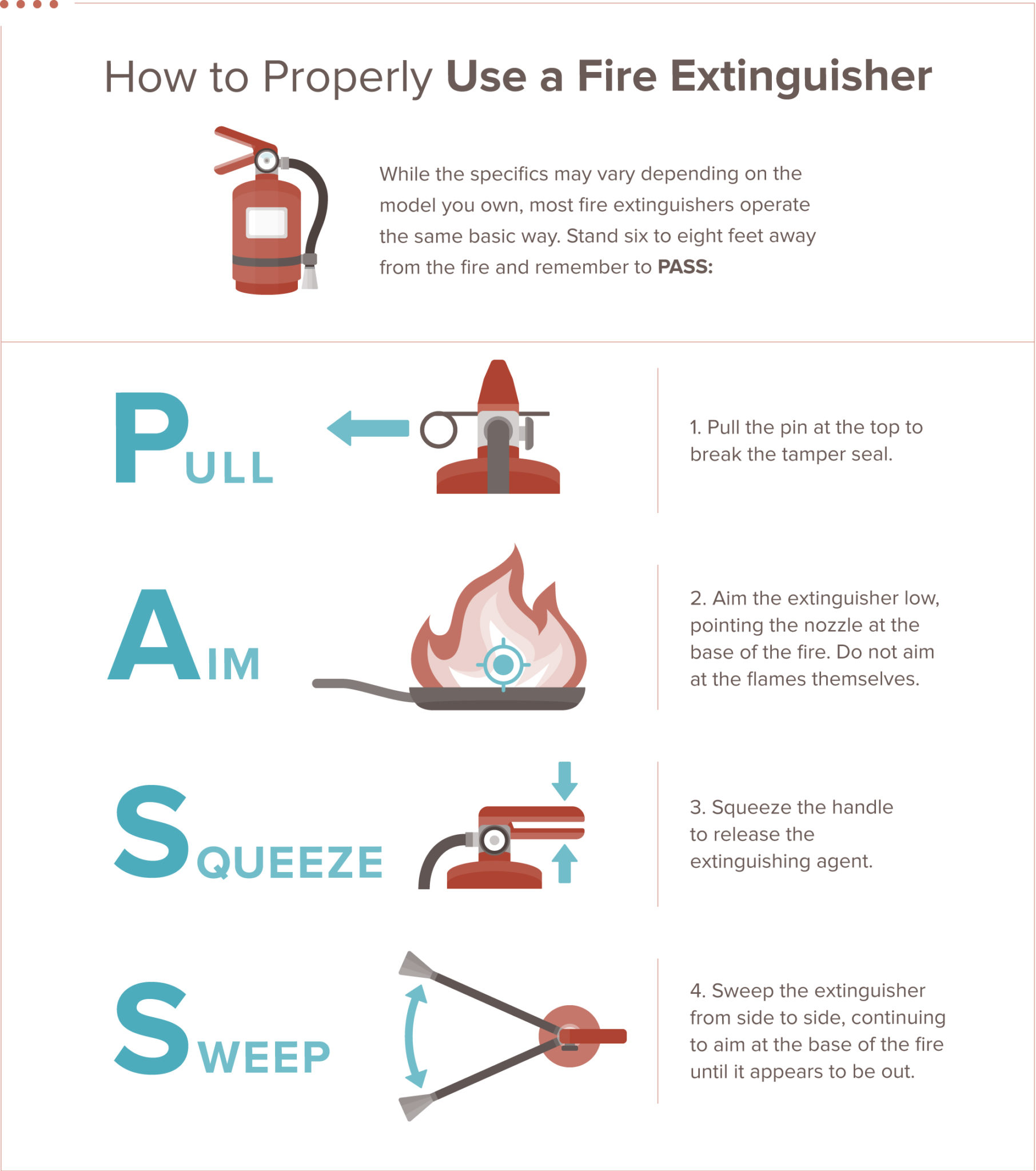Losing your home to a fire is a scary thought, but there’s plenty you can do to prevent fires from starting. And while accidents happen, you can learn how to prevent a fire from starting and spreading through your home.
Check out our fire prevention tips to keep your home safe from electrical fires, grease fires, and house fires.
Safety tips to prevent house fires
1. Check your smoke detectors
Fire and smoke detectors are your first line of defense against danger. When smoke and heat enter that little device on your wall, the sensors inside sound the alarm. This means you can catch the problem before it becomes an emergency. So be sure to keep your smoke and fire detectors in good condition.
Test every month
Get in the habit of testing your smoke and fire detectors once a month. It only takes a few minutes to test them, and it can save your home in an emergency.
Testing may vary from model to model, but most standard detectors have a button on the face. Press that button and wait for the alarm.
Ask a partner (your kids, spouse, or roommate) to listen for the alarm in a faraway room. The smoke detector may be working, but it isn’t helpful if the whole house can’t hear it. Do this for each smoke detector in your home once a month to keep them in good shape.
Change the batteries as needed
When the batteries in smoke alarms are low, you’ll know. Those annoying chirps every few minutes aren’t just for fun. They’re low-battery alerts and they shouldn’t be ignored. If a fire breaks out in your home and the smoke detector’s batteries are drained, the alarm won’t sound, putting your home at a higher risk.
- Friendly voice alerts
- Remote access through the app
- No false alarms from steam
Replace every ten years
Like any appliance, smoke detectors wear down after years of use. To keep your fire warning system in top shape, replace your smoke detectors every ten years. Standard models don’t cost much, so it’s worth investing in smart smoke alarms with a few extra features when you make the next big replacement.
2. Watch your appliances
Appliances like stoves and washing machines make daily life a lot easier, but they can also pose a fire hazard. According to the National Fire Protection Agency (NFPA), half of house fires start in the kitchen. Thankfully, there are a few ways to make every room in your home a little safer.
In the kitchen
From family meals to midnight snacks, the kitchen may be the best room in the house. But with so many appliances in one place, it deserves a little extra attention.
When it’s time to get cooking, be sure your oven, stove, and any hot plates are far away from flammable items like curtains, rags, or chemicals. Don’t leave the room unattended if you can help it. And keep a fire extinguisher on hand in the kitchen in case of grease fires or other emergencies.
How to Put Out a Grease Fire
If a fire starts while you’re cooking, try not to panic—just handle it as soon as you can.
- Cover the fire with a heavy metal lid and turn off the heat source.
- Baking soda or salt can handle a small fire. Do not use water to put out the fire.
- Keep a B-Class dry chemical fire extinguisher around in case the fire grows.
- Call 911 if you can’t extinguish the fire, and GET OUT.
Learn how to use a fire extinguisher before an emergency arises.
Sleeping areas
Start by taking a look at your mattress to make sure it contains flame-retardant chemicals inside. For extra protection, consider a flame-retardant mattress cover.
Good habits and smart fire safety practices can help prevent fires in the bedroom too. Electric blankets, smoking in bed, space heaters, and overloaded wall sockets are all hazards in the bedroom. If you smoke, take it outside. Only use electric blankets with automatic shut off abilities. And avoid overloading wall sockets and power strips with too many plugs.
The living room
If you have a fireplace, your living room or den may be a hot spot for fire hazards. Keep the stove or fireplace clean and clear of debris or flammable items (even when not in use). Having a Christmas tree near the fire sounds cozy, but it can be seriously dangerous without proper precautions.
When using your fireplace, keep the glass windows open and the metal screen shut. This allows air to enter the fireplace but keeps embers from jumping onto your floors. Use fire-safe tools like iron pokers to move around any logs inside. Never use your hands.
The laundry room
The laundry room seems like an odd place for fire hazards until you remember that dryer lint is flammable. When it comes to common places in your home for fires to start, the laundry room sees its fair share. These high-powered appliances can overheat, especially if the vents aren’t cleared out regularly.
Garage and outside
Grills, bonfires, and fireworks are obvious culprits for outside and backyard fires. But did you know potting soil is a fire hazard too? Fertilizer and some brands of potting soil contain flammable materials that can combust under heat or after someone ashes a cigarette.
Store your gardening supplies in a cool, dry area. And if anyone in your house smokes, be sure to provide them with a safe place to put out their cigarettes.
Whether it’s the grill or the summer sun, keep flammable products away from heat. Designate a cool, dark cupboard for flammable products and make sure all family members know where they go.
Keep combustible materials like paint and gasoline in their original containers. Store tightly closed paint containers upside down so the paint creates a seal. Gasoline should be stored in containers designed for gasoline. If a container develops a crack or leak, transfer its contents into a new container made of the same material as the original.
Practice Good Electrical Safety
- Look for frayed wires, surge marks in wire, and damaged cords. If you see any exposed wires, unplug the electronic and replace it immediately.
- Keep all cords away from furniture and rugs. Running cords under rugs is dangerous.
- Avoid overusing extension cords or crowding them into one socket. These can cause electrical fires from overuse or overloaded electrical connections.
3. Measure carbon monoxide levels
Carbon monoxide doesn’t damage your home like a fire does, but it’s still seriously dangerous. Carbon monoxide is an odorless, colorless gas released from burning carbon materials like fuel.
- Detects carbon monoxide, smoke, and heat
- Works with Apple HomeKit and Amazon Echo
- Uses voice alerts instead of annoying beeps
Burning wood, natural gas, coal, gasoline, and heating oil can all release CO into your home. When you cook on your gas stove or use your fireplace improperly, you increase the risk of fire and carbon monoxide poisoning in your home.
Consider getting a dual sensor carbon monoxide and smoke detector that senses heat, smoke, and CO. This will cut down installation time and costs and can potentially save your life. Check out all of our favorite CO detectors to learn more.
4. Practice safe habits
Simple precautions and staying aware of your surroundings lower the chances of a fire in your home. It’s easy to get distracted while going about your day, but activities like cooking can become dangerous quickly without some mindfulness. So start by forming fire-safe habits like these.
Careful with candles
We see candles throughout the year during holidays, the occasional spa night, and romantic dinners. But no matter what you’re celebrating (or unwinding from), it’s important to play it safe.
Never leave candles unattended and always keep them away from flammable items like blankets and curtains. Place candles in secure, tip-proof holders and extinguish them before leaving or going to sleep. If you’re afraid you’ll forget, set a timer on your stove or phone.
Close bedroom doors
House fires spread quickly when there are no barriers. Something as simple as closing bedroom doors at night can create passive fire protection that buys precious seconds when it counts.
Don’t smoke inside
We don’t recommend smoking, but if you do it, do it safely. Stay at least 25 feet from the nearest door and keep a place to dispose of your cigarette butts like an ashtray or smokers’ pole. If you smoke near a shed or garage, be sure the area is clear of flammable liquids and fumes.
Know the drill
Good habits can prevent fires, but you should still have a plan in case of emergencies. Discuss with your family what to do if a fire starts while you’re home.
- Establish two escape routes from every room.
- Practice and time your family twice a year to make sure they know the plan.
- Choose two meeting places away from your house in case of separation.
- Show everyone in your home where to find the gas and power shut offs.
- Make sure children have a way to contact you and know information like your address and phone number.
- Teach kids to STOP, DROP, and ROLL and how to call 911 in an emergency.
Keep equipment like fire escape ladders (in upstairs bedrooms) and fire extinguishers ready if you even need them. Fire-safe emergency kits are also helpful in scenarios like this.
Fire prevention FAQ
How do I prevent a grease fire?
If a grease fire starts in your kitchen, don’t panic. And don’t use water. Instead, smother the flames with a heavy lid or baking sheet, or use baking soda or salt to put out the flames. Be sure to turn off the power to the stove or fryer to prevent the fire from growing.
It only takes a few common sense measures to prevent a grease fire.
- Do not leave your cooking unattended.
- Do not fry frozen food in oil.
- Do not rush deep frying, the oil needs to heat slowly.
- Keep flammable items like oven mitts, towels, and curtains away from the cooking area.
- Store heavy lids and cookie sheets near the stove to use in case of a grease fire.
How do I escape a house fire?
Establish an escape plan with each of your family members, designating two exits out of each room. Check all the windows and screens in your home to make sure they can open when needed. Depending on the fire, it may be hard to see and breathe, so try to get out as fast as possible without touching too many surfaces in order to avoid burns.
When a fire starts in your home, escape time is precious. This is why knowing how to prevent fire and preparing for accidents is so important.
How many smoke detectors do I need in my home?
It depends on your home, but we recommend at least one smoke and carbon monoxide detector per floor in your home. You should also have one in your kitchen and one outside each sleeping area.
The post How Can I Prevent a House Fire? appeared first on SafeWise.
Article source here: How Can I Prevent a House Fire?




No comments:
Post a Comment